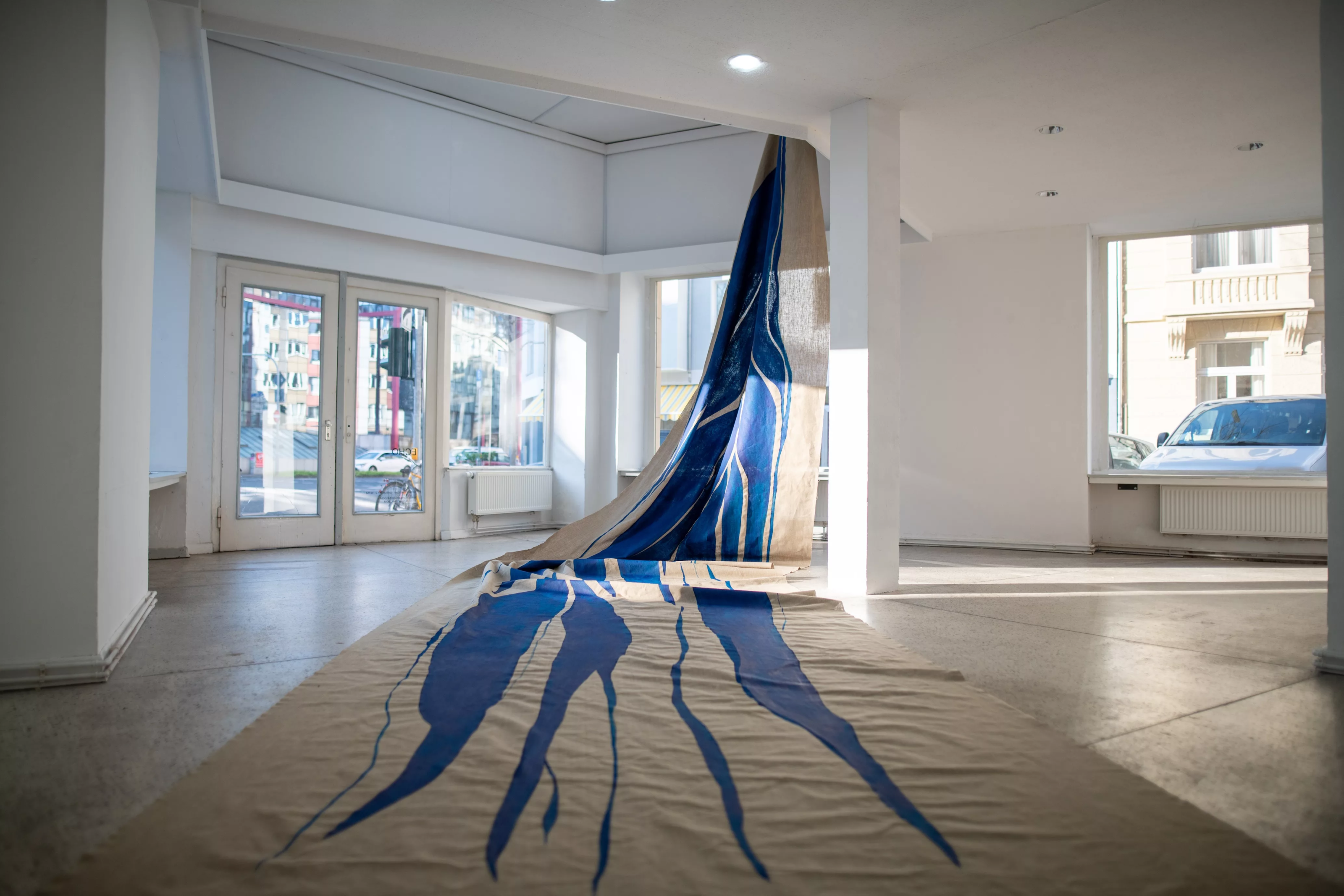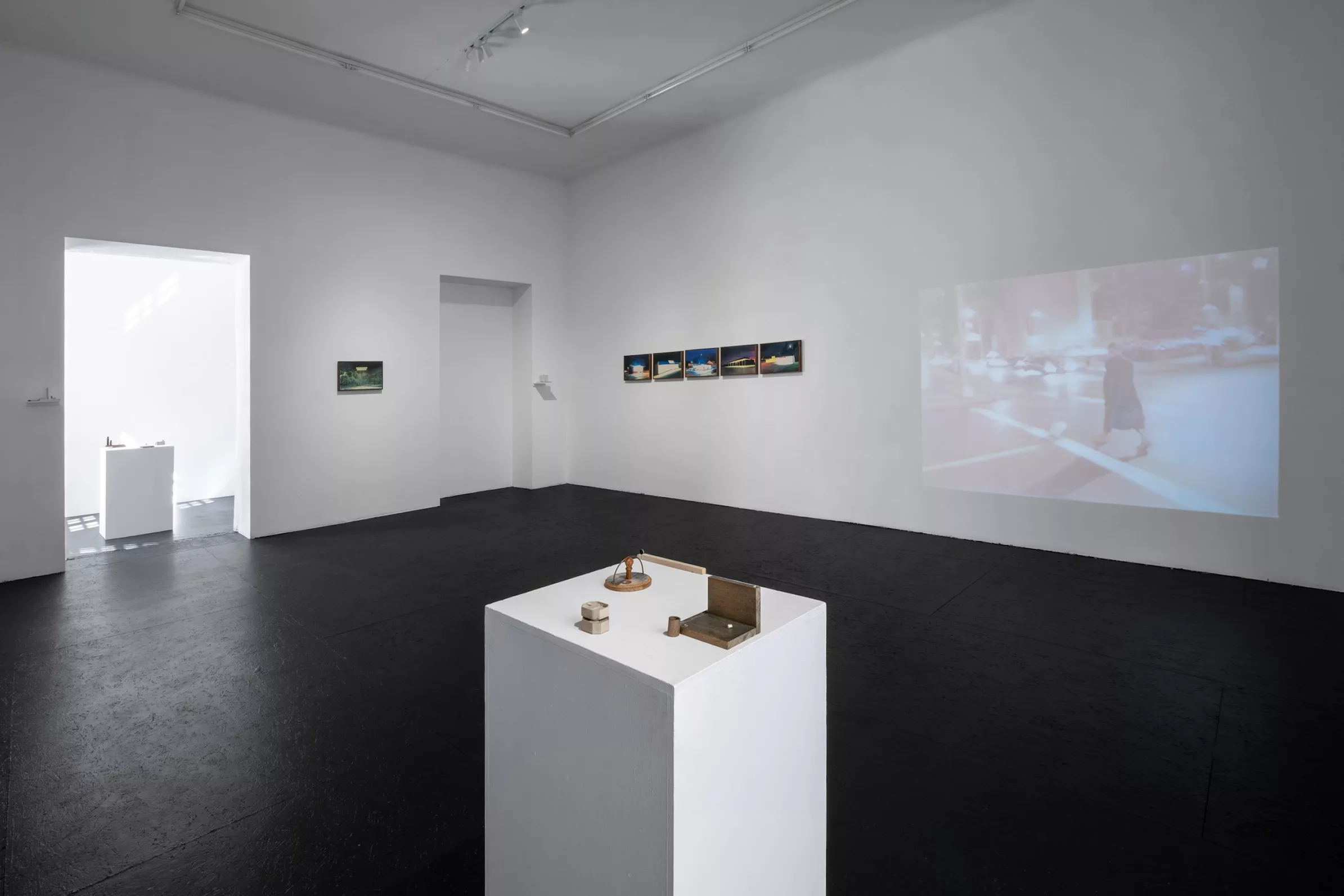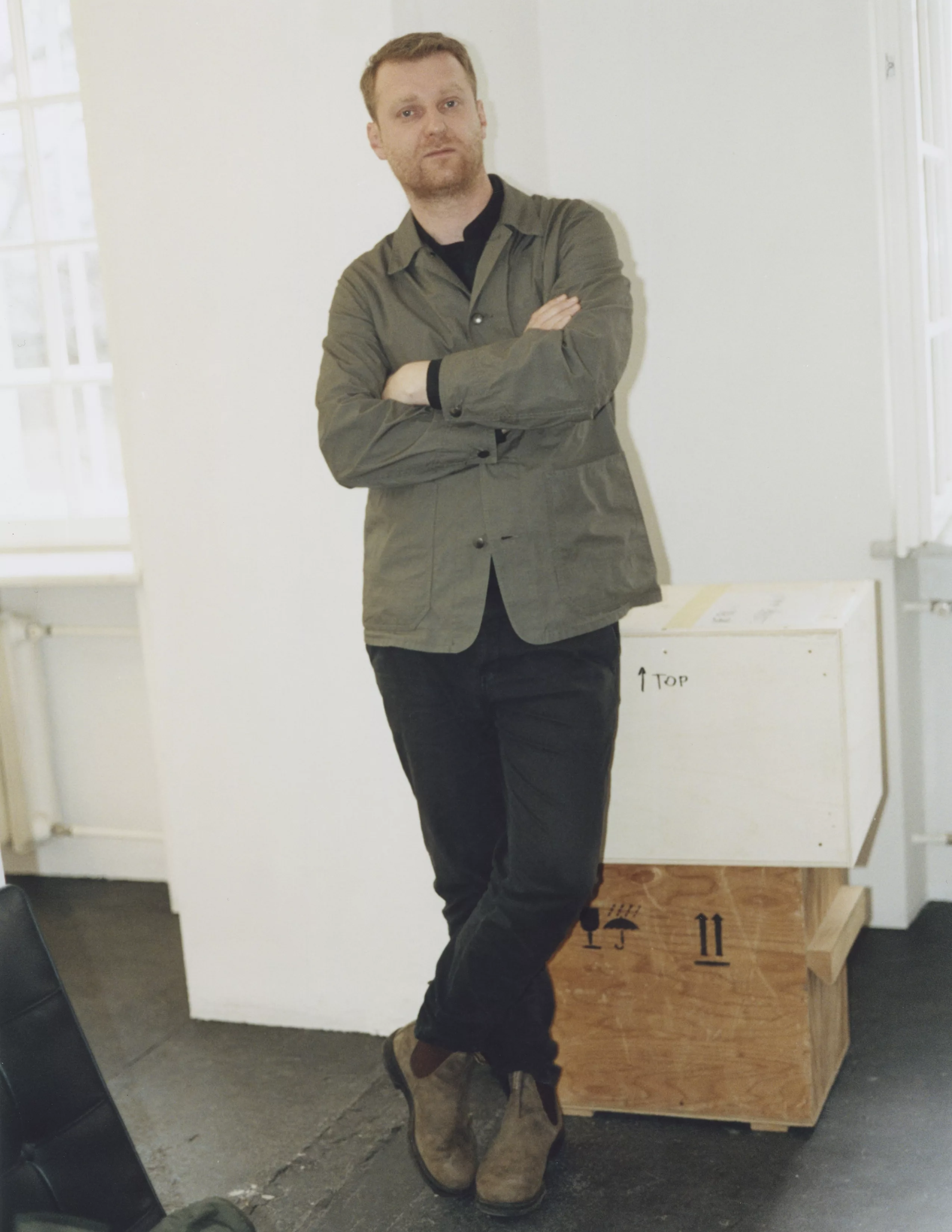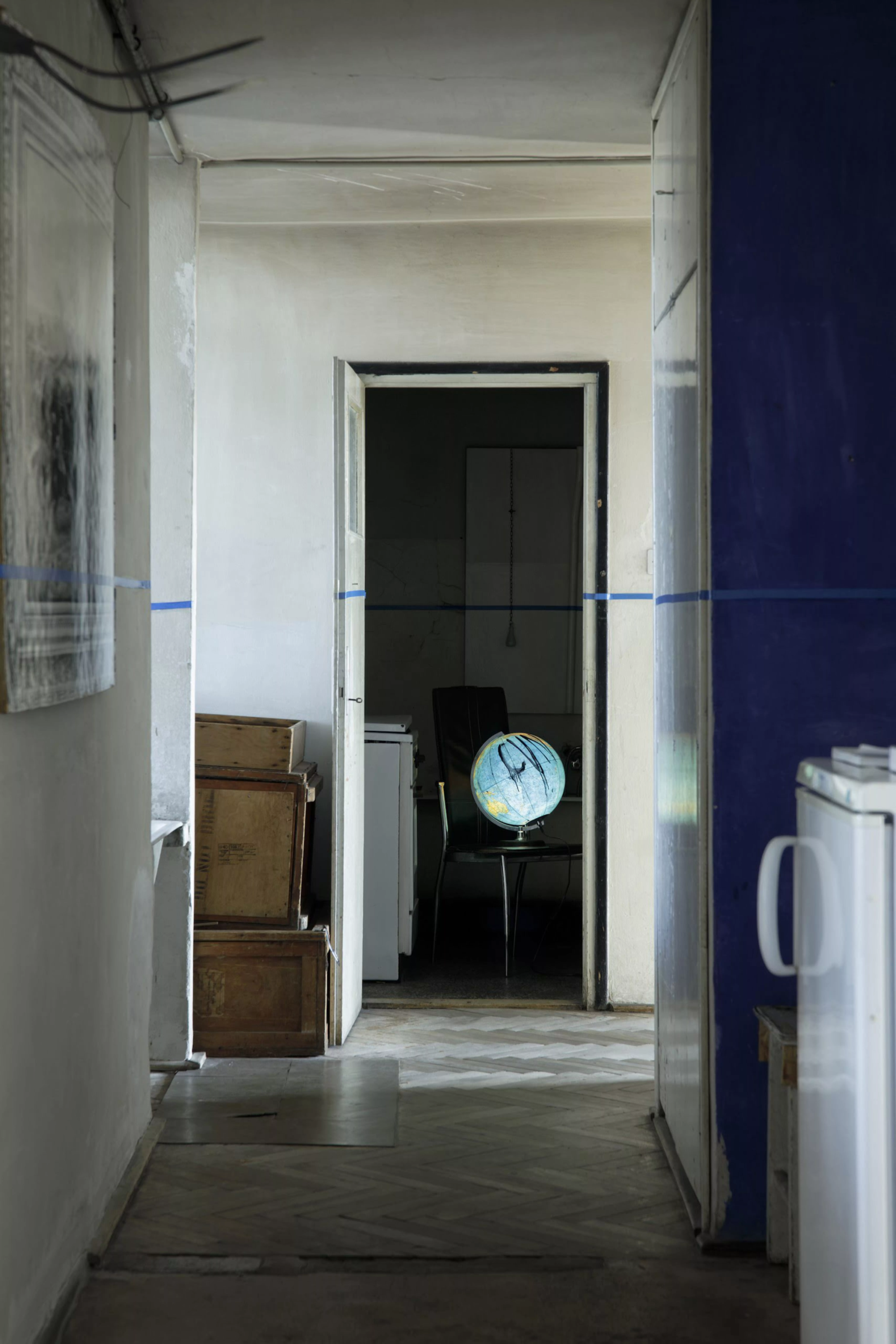
In the heart of Warsaw, amidst the cobblestone streets and historic facades, lies Wschód Gallery, a contemporary art space founded and curated by Piotr Drewko. We speak to him about his journey from a student navigating the complexities of visual culture to the founder of a gallery that functions on an international platform, taking part in Frieze, Liste and Art Basel, reflecting on his deep-rooted commitment to fostering dialogue, challenging art conventions, and embracing the power of collaboration within art.
What inspired you to establish Wschód, and what is your vision behind the gallery?
The inspiration for Wschód came rather late during my studies in London after leaving a Law and Journalism degree. I decided to pursue something I had almost no knowledge about – Critical Studies of Visual Culture and Photographic Arts. It was an extremely broad and theoretical course, which taught me how to look at the world – or, more precisely, how to not simply look but also grapple with the visual complexity that surrounds us. At the time, the art world, to me, was an ambiguous mass of inspiring but still unrecognisable parts. I had no idea where to begin or how to position myself within it, so at first I was just an observer. Back then, I wasn’t even considering working in art, let alone starting something of my own, like a gallery.
I remember one day we had a seminar at Tate, during which I wandered o for a bit and came across works by Latvian artist Vija Celmins, who makes drawings, paintings and photographs of the ocean, night skies and spider webs. The works were alluring – incredibly delicate and meticulously rendered. I hadn’t previously encountered the artist, but I was drawn to these works. Through them, I experienced a very specific moment of contemplation and extreme intimacy that triggered a transformation in the way I saw the world. It may sound naïve or even silly, but it was at exactly this moment that I decided that if artists can have such a strong impact on viewers through their work, then I wanted to be as close to artists as possible.
My vision for the gallery has been drawn again and again from this experience. In short, the gallery started with this powerful fascination with how something as logical, vivid, theoretically and well-structured as the world – both on micro and macro scale – can be reformed, remade, expressed and explained through variations of endless perspectives. I’m fascinated by the world, which is distant, unreachable, and complex, and that’s essentially what art is to me, so if I can have a way to pursue a dialogue with such an intriguing reality, why not do it every single day? That experience and these interests are at the core of Wschód. Also, the name Wschód means sunrise and refers to a new beginning (additionally references the geographical east), which again has so much to do with how the idea of a gallery began for me.

What are the criteria or values that guide your selection of artists to represent at Wschód?
I look for artists who challenge me, who excite me, and who are relentless, daring and tenacious. A lot of the time, of course, these qualities cannot be put into words; sometimes, you just know when you know. To me, working on an exhibition is like exploring or commanding a world you have not known before – you suddenly have all these moving parts. It’s about piecing them together, ripping them apart, and is so much bigger than forming an aesthetically pleasing image or commercially driven outcome. Can you remember the last time you felt that you were learning something for the first time? Or looking at something you had no idea existed? This is exactly what drives me when deciding to work with an artist. Can an artist’s work make me feel these things? If so, then I have no further questions.
How do you see Wschód contributing to the contemporary art scene in Warsaw and internationally?
The best possible way to answer this question would be to ask those who visit our shows if they learn anything. Or if what they’re looking at is exciting or stimulating? This is our goal: to examine the state of the world and then transform it by covering a fresh and unique perspective. In Warsaw, we bring in a lot of artists, curators, collectors, writers from abroad to foster a dynamic of exchange with the Warsaw scene. In introducing as many international perspectives as possible, we hope to present inspiring alternative viewpoints, but it also works the other way around. We’re also working to support the local scene in growing, evolving, and becoming more open.
The international gallery scene is so indenite, complicated and vast, and we hope to contribute to the conversation because the process of exploring and building something together is as important as that nal result. I think it’s the same for every gallery – we all have something unique to say and everyone is equally important in enriching them in their own distinctive way.
What are some of the biggest challenges you’ve faced in running a contemporary art gallery, and how have you overcome them?
The biggest challenge from the very beginning, and my biggest fear, has always been – and likely will always be whether or not I have something significant to say. It’s extremely challenging to ensure that the shows I am presenting locally and internationally remain thoughtful. I am always trying to assess whether they are important to anyone, why people need them, if they’re honest, and how much, if any, impact they’ll have on audiences. I do not think there is a way to overcome those feelings on the part of me that is led by those questions, scepticism, and uncertainty. Stirring “that ship” and believing it is worth it despite those doubts is an everyday struggle.

Wschód has initiated various cultural activities such as publications and podcasts. How do these initiatives coincide or complement the gallery’s exhibition program?
Our projects and initiatives outside of exhibition programming add another texture to the gallery. Sometimes, you need more, and those elements are just that – this “more” that enhances our audience’s relationship with and experiences of the art. You can’t know everything about a topic, let’s say, reading just one book. Inspired by that book, you continue to explore and expand your research. Similarly, we hope that our additional projects are that next book, a next step for audiences who have encountered our exhibitions to look harder at the artists and their work and build a more expansive understanding of contemporary art in general.
Could you share some insights into the Friend of a Friend gallery exchange program? How has it impacted Wschód and its network of collaborators?
The Friend of a Friend programme was inaugurated less than a year after the opening of Wschód in Warsaw. The city has such an interesting history and great artists, ambitious galleries and a dynamic scene, so I wanted to contribute to that scene and stimulate it. The initial idea was to explore the possibilities of the project Condo, started by Vanessa Carlos, and have an edition in Warsaw, but sadly, this was not possible in the end. The conversation did, however, give me the confidence and heads up from a great gallery to pursue something new under a different name, something very closely associated with the local scene. I began by talking to a couple of significant Warsaw galleries that I believed had to be on board for the project to succeed. Then, I reached out to a few international ones and an institutional partner – which I knew I would need in order to secure the funding. But I was still new on the scene, and it was obvious that my own enthusiasm was not going to be enough to cultivate this ambitious new project with such a strong international angle, so I asked critic and curator Ewa Borysiewicz, who was then at the Adam Mickiewicz Institute (which financially supported the project) and the more established Stereo gallery to join the team. We did it together.
I think every person has the same desire – to make the world around them a better place, so the idea of Friend of a Friend came from exactly that. I wanted to initiate a platform for galleries and artists to help us all grow. Executing exhibitions together with international partners felt like a compelling way to be challenged. It has also really helped Warsaw to thrive, putting a spotlight on its captivating history and great cultural institutions. Everything is a learning curve – at that time, for a gallery as young as Wschód, Friend of a Friend demonstrated how far we still needed to go, how much we had to learn, but most of all, it made us want more for ourselves; inspired us to pursue further international projects and relationships. It made us look beyond Warsaw in a more general sense – in the sense of what we would like Wschód to be and where we would like the gallery to go from there.

What motivated the decision to establish the time-shared exhibition space ECHO in Cologne, and what opportunities has it provided for Wschód and the artists you represent?
ECHO in Cologne was initiated by Wschód as a time-shared exhibition space and established together with galleries Bureau, Hot Wheels, LC Queisser, and Stereo. The term time-shared was quite fundamental as the collaborative part was based on one-year segments where galleries organised exhibitions collectively and independently. Each of us could stay with ECHO or leave after one year, new galleries could join, and the list and program would be repositioned. The format was meant to be able to sustain the project financially and not force anyone to commit to a long-term stressful lease, especially when certain costs were much higher for some galleries than for others. ECHO was both fun, exciting and pragmatic. It felt like an experiment worth the time and investment after organising a few editions of Friend of Friend, from which I felt compelled to think of something that could guarantee more consistent exchange of ideas and intensify international collaboration.
With its strong artistic scene and market, Cologne felt like the right place. Of course, it was a game of chance and coincidences, but we were lucky to have the right space and good people on the ground to help with the lease and support the galleries. Since ECHO functions like an unocial second space for each of the participating galleries, many consider it a project space, a venue for experimentation, and a place to go beyond the programmes of our main galleries.
I guess, at the beginning I thought Warsaw was my centre, but gradually I learnt there isn’t one exact, particular centre. We can have a lot of dierent ones, and that also was the foundation of thinking beyond Warsaw, beyond Friend of a Friend. If everything is continuously evolving and changing, we need to somehow do it as well.

With the expansion to a gallery space in New York, what goals or aspirations do you have for Wschód’s presence in such a prominent location within the art world?
I think the gallery has to constantly grow, be challenging for both the sake of the business but, more importantly, to keep the artists focused, intrigued, and get their hearts beating a little faster. That way there is always room for progress and advancement. It’s natural to try new things and keep going.
New York…well – it’s a city of almost mythic status, with a not only demanding, bold and experimental scene but a scene that consistently goes above and beyond. Art has this ability – or at least should have the ability – to change people’s perspective, and this is what I am looking for – a way to have my thoughts disturbed, questioned, have my life changed – even in a very small, insignificant way so that it is never the same. I believe New York does that; it drives you, pushes you, confronts you – and if the city and its complexity do that to me, I think it will do the same for my artists. A great deal of the galleries and dealers that shaped the way we work and perceive the art world are based in New York, so the level of excitement is enormous. We want the opportunity to learn and progress, and I believe the prospect of facing such a complex creature as New York, with all its ambition, difficulties, and competitiveness, will be an experience we will never forget.
Our space is located on 136 Orchard Street, on the ground floor. It’s a fantastic neighbourhood near to the New Museum and all the Tribeca galleries, as well as one of the most lively and exciting projects, the artist-run space “Orchard”. I have such strong admiration for the artists and programmes there, and so I felt this was the right street for Wschód’s New York gallery. The space is actually very exciting. It is a former tailor shop that has been there for ages. It has a narrow but long interior with yellow walls. Through the renovation, we left as many original touches as possible – I wanted to keep the spirit of the past very present here.
From the very beginning, I called it an experimental outpost for the gallery – and for the time being, this is how I will continue to look at it. New York expects that if you come, you come prepared and ready and that means you need to deliver. However, in this scenario, in our case, having more freedom, trying different things, and experimenting is justified, even natural. We are also not taking anything for granted – we let every step and decision we make influence our future here.
Wschód New York operates within a couple of interweaving formats – an exhibition program on the ground level where we are exhibiting both gallery artists through a series of solo presentations and inviting local artists to participate in group exhibitions. On the lower level of the space is an experimental cinema in which, under the curatorial supervision of Basel-based critic and curator Krzysztof Kościuczuk, we run a one-year program of films, podcasts, lectures, interviews and talks with thinkers, artists, curators, and critics.
Looking ahead, what are your plans and ambitions for the future of Wschód gallery, both in terms of its programming and its impact on the artistic community?
The idea is to be doing what we have been doing, but more and better. We’d like to grow with the artists we have been working with, establish new relationships, and foster new collaborations.
Written by Sofia Hallström





